Thanks to ULN at the insightful blog Chinayouren for his review of Chinese Gods:
… in terms of surprises, this book delivers from the preface. First, you discover it was actually written and self-published by Chamberlain 30 years ago, inspired by a series of painted glass figures he collected from local markets. It goes on to describe an unusual interview in Bangkok with British mystical writer John Blofeld, a reference in Asian religions, who agreed to give the book a prologue in articulo mortis. And then suddenly, before you realize it, you are swimming in the thick soup of China’s beliefs, following the author in his daring quest to make sense of all the Gods.
Most books I have seen about Chinese religions are centred on the three main systems: Confucianism, Taoism and Buddhism, often giving an interpretation of present behaviours in the light of the teachings of the sages. From the outset, this book is radically different: it holds that, for the majority of the Chinese, there has never been more than one unnamed religion, which absorbed all the other masters and deities — including, in some extreme cases, Jesus Christ and Muhammad (!). Based on this premise, the author explores the main aspects of this religion, analyzing the ways in which it created its Gods, and explaining these Gods as a projection of the Chinese society rather than the opposite.
Having lived in Hong Kong for a long time I thought I had a reasonable understanding of Chinese culture, but reading Jonathan Chamberlain’s book showed me how little I know. Below we print an excerpt.
譚公 Tam Kung: The Boy God
At the end of the praya of Coloane Town in Macau there is a small temple to Tam Kung. Inside, there is a rib from a whale to which someone has added a number of small wooden carvings, transforming it into a replica of a dragon boat. Whale bones are also very much in evidence at a temple to Hou Wang (侯王) in Tai O, on the southern tip of Lantau Island, Hong Kong. This temple is delightfully sited on a tongue of land almost entirely surrounded by water. The two Gods honoured by these temples are intimately connected for they died within seconds of each other just over 700 years ago.
In 1276 Kublai Khan’s Mongol troops swept south of the Yangtze River and took Hangchou, capital of the southern Sung dynasty. They captured the emperor – no more than a boy – and took him to Peking. The emperor’s younger brothers managed to escape and they fled south. The next eldest was invested with the mantle of Son of Heaven and became the focus of Sung resistance to the invaders. The speed of the Mongol advance bogged down, literally, in the rice country of the south but they remained irresistible, continuing to force their way south. The new emperor died and the mantle fell on the youngest of the brothers – an eight-year-old child. Finally, in 1278 or 1279 (accounts vary), what little remained of the Sung court found themselves on a rocky island off Kwangtung province surrounded by the Mongols. There was no hope of escape. One of the chief ministers took the young boy on his shoulders and leapt off a cliff. Both drowned, but death was honourable.
Such are the bare facts around which a rather more elaborate story has been strung. According to this, the boy emperor arrived in Hongkong harbour with an imperial fleet of junks carrying some 3000 soldiers, retainers and ministers. They landed on Kowloon peninsula roughly where Kai Tak airport now is. They were met by the villagers of the place whose headman – one Tam Kung – welcomed them and did their best to provision them. The emperor built a house on a small hill overlooking what is now Kowloon City. They did not stay long but sailed across the Pearl River estuary to Heungshan, where rice was more plentiful. Shortly after this the Mongol fleet caught up with them. The two fleets clashed and the Sung fleet was scattered and destroyed. Lo So Fu, the chief minister, ordered his wife and daughter to drown themselves while he took the emperor on his shoulders and jumped into the water.
The story incidentally gives the origin of the name Kowloon to the fact that the emperor counted the peaks and commented that there were eight dragons but was reminded that since he was present there were nine. ‘Kowloon’ – 九龍 – means ‘nine dragons’.
The historical accuracy of this slightly more elaborate account is suspect but it is quite likely that the last Sung Emperor did set foot on Kowloon peninsula. Tradition is obstinate. When the Japanese took Hong Kong they decided to expand the airport. Unfortunately a hill stood in the way. This hill was traditionally the site of a large cave where the Sung Emperor resided while his boats were being repaired. Before work started on blasting the hill away, the Japanese carried out a ceremony involving 50 Japanese monks to persuade the spirit of the Sung Emperor to find another residence.
If Tam Kung were a popular God throughout China we would be fairly safe in dismissing the story but he is not. He is a God confined to a very small area – the coastal strip that includes Hong Kong and Macau. This adds some credibility to the legend though there are details that one should take with a pinch of salt. It is said the young emperor had never seen lychees before his arrival. When he saw them they were unripe. He sighed and exclaimed that he would have liked to taste them. The next day the lychee tree he had been looking at was heavy with red ripe fruit. There is even a plaque at the spot where this is supposed to have occurred, in Heungshan, north of Macau.
Putting the pieces together it is clear that Tam Kung is the last Sung Emperor deified under another name. There is no ambiguity about the identification. Tam Kung is a boy. He is a God of local provenance and he is prayed to for safety at sea. Hou Wang also is a wholly local figure and it is explicitly stated that he was an officer in the Emperor’s retinue and that he jumped off a cliff with the boy Emperor.
Why is the boy God called Tam Kung? The extended account of the history adds the detail that Tam Kung, who we are told was the headman of a village where Kowloon City now is, began to be remembered at a time when the power of the Mongols was waning. The answer is now clear. He was worshipped under another name as it would be rather foolhardy to admit to worshipping the last Sung Emperor when the Mongols were in power. Worship went underground until it was safe to emerge, early in the Ming Dynasty. But why was he given the surname Tam? We can be sure that he was not given – or lent – the name of a village headman. It would be sacrilegious to name an emperor after a mere peasant. It is also unlikely that a village headman would have been called Lord Tam. ‘Kung’ (公), Lord, is an honorific title normally only accorded to the elderly and the wealthy. The Tam Kung of the story was neither. Tam (譚) is a common enough surname and has the additional meaning of ‘to boast’. The character is made up of ‘word’ (言), ‘west’ (西), and 早, which can either mean ‘early morning’ or ‘long ago’. As west is the direction of old age and dying, there appears to be the implication ‘the world of the old ancestors’.
Given this, Tam seems to be a fairly appropriate name to bequeath a recently dead emperor, the worship of whom must be kept secret. Further support that we are on the right track can be gained from looking at a closely related word. Tam (禫) is identical in tone, in Cantonese, to the surname and as we can see by comparing the characters, the two ‘Tams’ share a similar range of reference. This word is the name of the sacrifice made at the end of the 27-month period of mourning for a parent. The emperor was considered the father and mother of the people.
Having said all this, the identification of Tam Kung with the boy Sung Emperor is not as widely acknowledged as perhaps it should be. Burkhardt makes no mention of the connection. He gives us only the unsatisfactory information that he was a local worthy hailing from Wei Yang, a Hakka district in Kwangtung, who attained enlightenment in Kowloon and who derived his powers from the petrified remains of the nine dragons that form the northern boundary of Kowloon. Another story says that he was worshipped as a God when he was 12 years old. All stories however assert that he has power over rain and water and is very efficacious when it comes to extinguishing fires. His celebrations take place on the eighth day of the fourth moon, which is the beginning of summer.
The insistent connection with dragons, the imperial symbol, seems to bolster our original claims that he is the deification of the last Sung Emperor. As an ancestor his element would be water while the element associated with summer is fire. Winter is the dry season. By the beginning of summer the earth is parched. If the harvest is to be good, rain must fall. He is very good at extinguishing fire. It is said that he could summon rain by throwing a cup of water in the air. As water flows under the earth it must get into the sky somehow.
The picture is neat but not as neat as it would be if we insisted that his imperial origins had precedence over his powers to control rain. The dragon is the animal symbol of the third month denoting the end of spring. Tin Hau, whose feast is on the 23rd day of this month, clearly has precedence both in the matter of making rain and in her claims to imperial insignia. Tam Kung has to be content with the snake – son of the dragon and one of the two animals of winter.
If any readers of this book wish to collect glass paintings of the Gods they will find it difficult to find one of Tam Kung. I was forced to commission the one I possess, which explains the relative crudity of its execution. The woman in the shop asked me how I wished the painting to depict him. Did I want him standing with an arm in the air, feet on whirling discs? We discussed his stance for ten minutes until an inner voice advised me to establish his normal posture. He is always seated and holds a bell in one hand, they told me. So be it. But why the bell? I asked. They shrugged. Because he is a boy and boys play with bells, one suggested. The handbell was used to instruct soldiers to stand still and be silent and for this reason became associated with veneration and respect. Bells of this sort have been used since antiquity by heralds of the sovereign to convene assemblies to hear the Imperial messages. Tam Kung holds the bell calling us to hear the word of the ancestors.
Read more at Chinese Gods.

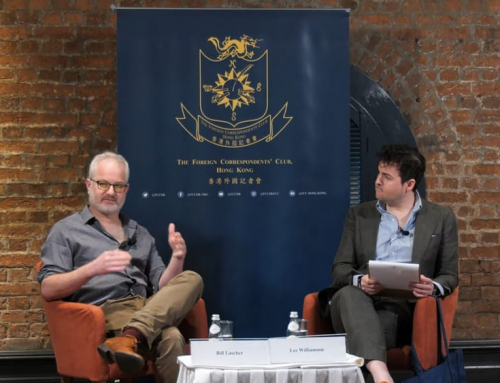
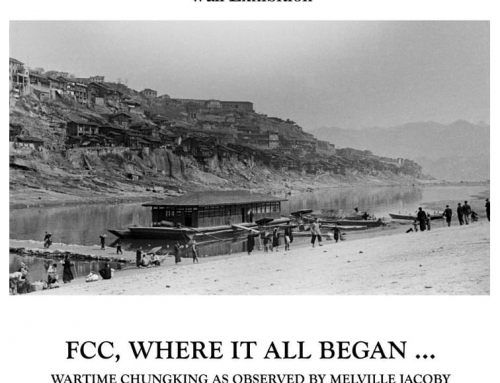
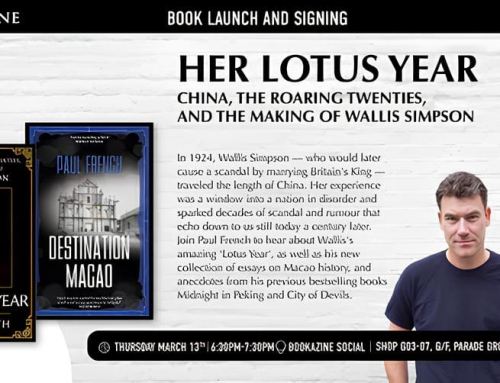
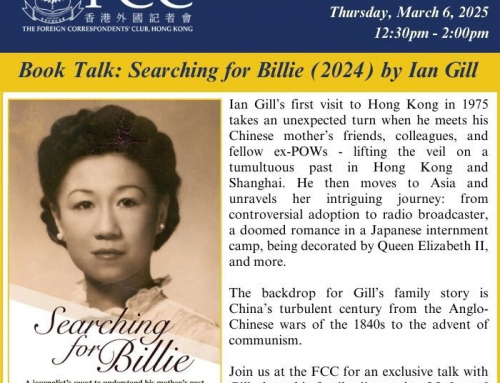
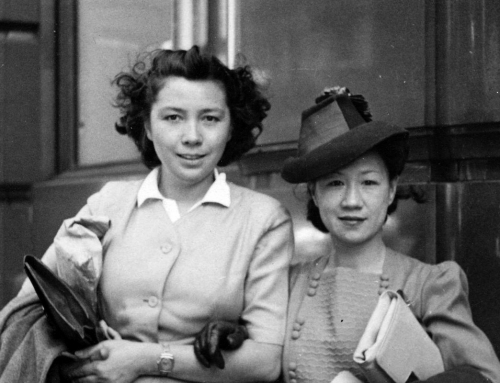
Leave A Comment